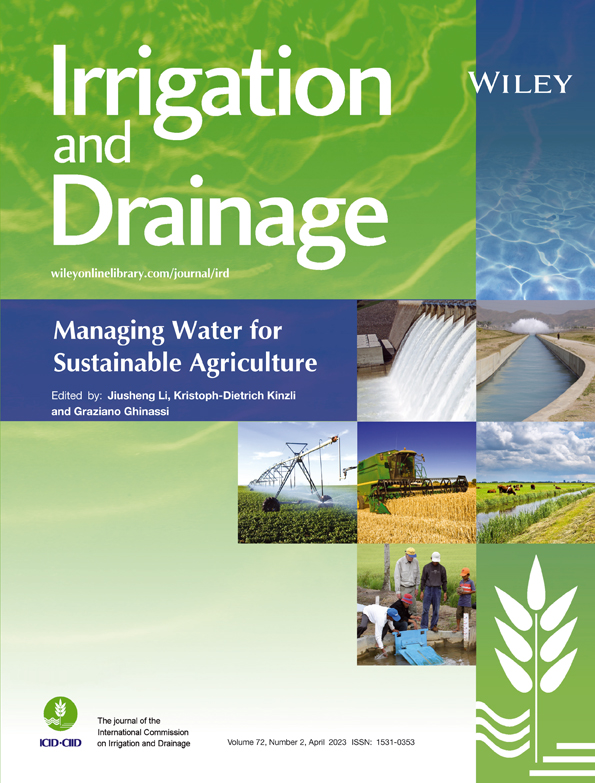Grain yield prediction model based on the analysis of climate and irrigated area conditions in the wheat grain-filling period
Article title in French: Modèle de prévision du rendement en grains basé sur l'analyse des conditions climatiques et des zones irriguées pendant la période de remplissage des grains de blé.
Huang Hongliang as co-first author.
Abstract
enThe food problem is a major issue of common concern around the world, and the forecasting of wheat output can help to promote the solution of this problem. This paper analyses the relationship between wheat yield and weather, precipitation and irrigated area; proposes a Bayesian optimized machine model of the XGBoost regression algorithm; and applies it to forecast wheat yield in Uttar Pradesh, India. Second, the stability and robustness of the XGBoost model using the top five parameter combinations of the optimization score were evaluated by cross-validation, and the best model was used to predict wheat yield in Uttar Pradesh, India. Finally, the model is compared with other prediction models, and the tenfold cross-validation experimental results show the effectiveness of the model. Ultimately, by learning from the available data and using the 2022 wheat irrigation data to forecast wheat yield per acre, we obtain a wheat production estimate of 17 930 817 t in Uttar Pradesh in 2022, which is a decreasing trend from previous years' wheat output. The impact of extreme heat on total production is somewhat contained by the year-on-year increase in the irrigated area in Uttar Pradesh.
Résumé
frLe problème de l'alimentation est une préoccupation majeure commune du monde, et la prévision de la production de blé peut contribuer à promouvoir la solution de ce problème. Cet article analyse la relation entre le rendement du blé et les conditions météorologiques, les précipitations et la zone irriguée, propose un modèle bayésien de l'algorithme de régression XGBoost, et l'applique pour prévoir le rendement du blé dans l'Etat d'Uttar Pradesh, en Inde. Ensuite, la stabilité et la robustesse du modèle XGBoost utilisant les cinq meilleures combinaisons de paramètres du score d'optimisation ont été évaluées par validation croisée, et le meilleur modèle a été utilisé pour prévoir le rendement du blé dans l'Etat d'Uttar Pradesh, en Inde. Enfin, le modèle est comparé à d'autres modèles de prédiction, et les résultats expérimentaux de validation croisée par dix montrent l'efficacité du modèle. En fin de compte, en apprenant à partir des données disponibles et en utilisant les données d'irrigation du blé de 2022 pour prévoir le rendement du blé par acre, nous obtenons une estimation de la production de blé de 17 930 817 t en Uttar Pradesh en 2022, ce qui représente une tendance à la baisse par rapport à la production de blé des années précédentes. L'impact de la chaleur extrême sur la production totale est quelque peu contenu par l'augmentation annuelle de la superficie irriguée en Uttar Pradesh.
Open Research
DATA AVAILABILITY STATEMENT
The agricultural data used in this study are from the Ministry of Agriculture and Farmers’ Welfare of India (aps.dac.gov.in/), and the climate and precipitation time series are from the World Bank Climate Change Knowledge Port (climateknowledgeportal.worldbank.org/). Code name: The Bayesian optimized XGBoost model is applied to the effects of climate and irrigated area during wheat grain filling on wheat production. Code release date: 2022. Authors: Gong Qizhou, Huang Hongliang. Email: [email protected]. Software and hardware environment foundation: Software: This code is developed under the win10 operating system based on the Python language and uses Jupyter as the compiler. Hardware: The experimental environment is based on the Inter i7 processor and has an operating platform with 16 GB RAM.




